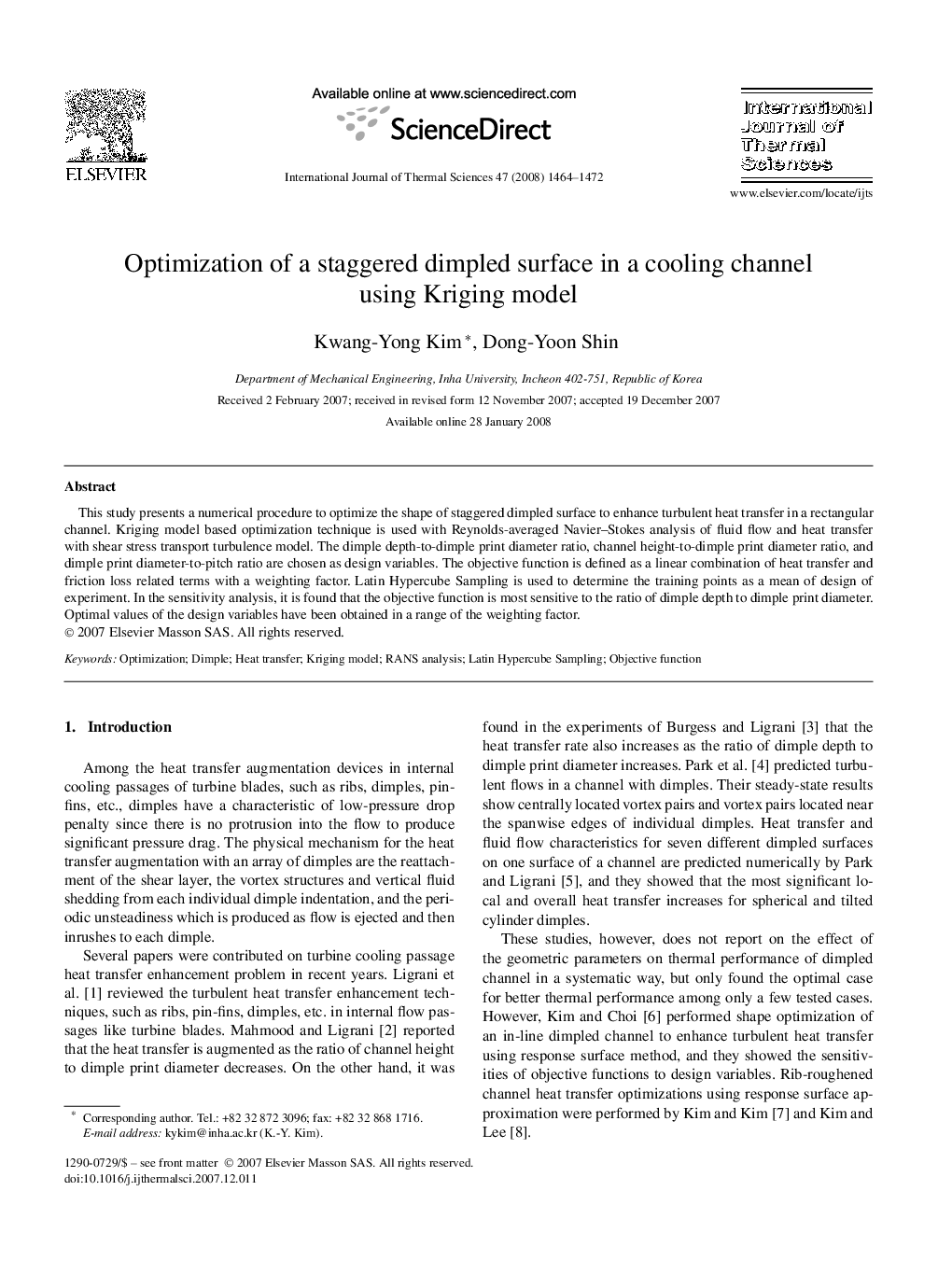| Article ID | Journal | Published Year | Pages | File Type |
|---|---|---|---|---|
| 669184 | International Journal of Thermal Sciences | 2008 | 9 Pages |
Abstract
This study presents a numerical procedure to optimize the shape of staggered dimpled surface to enhance turbulent heat transfer in a rectangular channel. Kriging model based optimization technique is used with Reynolds-averaged Navier-Stokes analysis of fluid flow and heat transfer with shear stress transport turbulence model. The dimple depth-to-dimple print diameter ratio, channel height-to-dimple print diameter ratio, and dimple print diameter-to-pitch ratio are chosen as design variables. The objective function is defined as a linear combination of heat transfer and friction loss related terms with a weighting factor. Latin Hypercube Sampling is used to determine the training points as a mean of design of experiment. In the sensitivity analysis, it is found that the objective function is most sensitive to the ratio of dimple depth to dimple print diameter. Optimal values of the design variables have been obtained in a range of the weighting factor.
Keywords
Related Topics
Physical Sciences and Engineering
Chemical Engineering
Fluid Flow and Transfer Processes
Authors
Kwang-Yong Kim, Dong-Yoon Shin,
